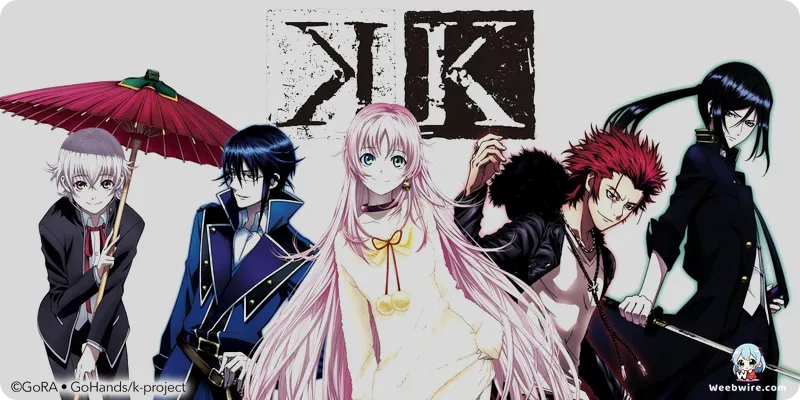The Mystery of 'K': Unraveling the Anonymous GoRA Collective, GoHands' Polarizing Style, and the Hidden Lore of the Seven Kings

Since its debut in 2012, the anime series K (often stylized as K Project) has been recognized not only for its gripping action and compelling supernatural premise but also for a production history defined by audacious visual artistry and creative secrecy. While the central conflict involving the powerful Seven Kings and the enigmatic, amnesiac protagonist, Yashiro Isana, anchors the narrative, the series' lasting fascination stems from the unprecedented creative forces and meticulous world-building that shaped it. This unique confluence of factors establishes K as a singular achievement in contemporary animation.
The Creative Secrecy of the GoRA Collective
At the core of K's narrative complexity is the identity of its original architects. The series was conceptualized and scripted entirely by an anonymous collective of seven writers, known exclusively as GoRA. This highly unusual, collaborative model ensured that the intricate lore, expansive world structure, and deep character development emerged from a unified creative pool rather than relying on a traditional single author. The meaning behind the acronym GoRA remains a topic of speculation among fans, reinforcing the show's inherent sense of intrigue.
Crucially, the collective’s involvement extended beyond the anime production. They meticulously oversaw the subsequent manga and light novel adaptations, guaranteeing a rare consistency and cohesion across all media platforms. This level of coordinated, anonymous creative output is virtually unmatched within the anime industry, mirroring the secretive nature of the plot itself.
GoHands' Signature Hyper-Cinematic Aesthetic
The series' unforgettable aesthetic is the direct product of animation studio GoHands. Recognized for their highly stylized approach, GoHands utilized extreme, dynamic camera angles, saturated color grading, and pervasive post-production effects. This signature style was championed by K.

Viewers often recognize the studio’s trademark use of intense lens flares and dramatic depth-of-field manipulation, which lends the series a hyper-cinematic, almost palpable quality. Though occasionally divisive, this intense visual language masterfully amplified the supernatural energies, or Auras, wielded by the Kings. The fight choreography, especially involving the disciplined Blue Clan (Scepter 4) and the volatile Red Clan (Homura), leveraged rapid 3D camera sweeps, transforming every skirmish into a visceral, high-octane spectacle.
Grounded Settings and Sophisticated Lore
Further enriching the narrative depth is the series’ surprising commitment to realism within its urban framework. While the action unfolds in a fictionalized Japan, GoHands painstakingly modeled many locations after actual Tokyo districts. For instance, the headquarters and surrounding environment of the Red King’s clan, Homura, are clearly inspired by the architecture and street layouts of Shinjuku, particularly the bustling Kabukicho area. This dedication to authentic background art, achieved through extensive location scouting, establishes a powerful contrast when overlaid with fantasy elements, such as the colossal, glowing Swords of Damocles that perpetually hover above each King. This subtle grounding in reality makes the sudden eruption of vibrant, colored Auras and superhuman combat all the more impactful.
Finally, the intricate system of the Seven Kings is underpinned by sophisticated color psychology. Each King’s aura reflects deep philosophical and moral ideals: the destructive passion of the Red King, Mikoto Suoh; the ordered restraint of the Blue King, Reisi Munakata; the detached freedom of the Silver King, Yashiro Isana (Adolf K. Weismann); and the influential stability of the Gold King, Daikaku Kokujōji. This deliberate color assignment informs the ethos of their respective clans.
An essential plot mechanism, the Dämonenblut Sword, or Sword of Damocles, adds a layer of tragic realism, symbolizing the immense burden and constant threat of collapse if a King oversteps the limits of their supernatural power. Even the protagonist’s name holds a hidden clue: 'Isana Yashiro,' when phonetically rearranged, subtly hints at his true identity as the First King, Adolf K. Weismann. This combination of complex world-building and groundbreaking visuals secured K's place as an intellectually stimulating supernatural thriller.
Credits
K
Author
GoRA Project
Cover Art
GoRA / GoHands
Studio
Starchild Records
Publisher
Kodansha
Producers





